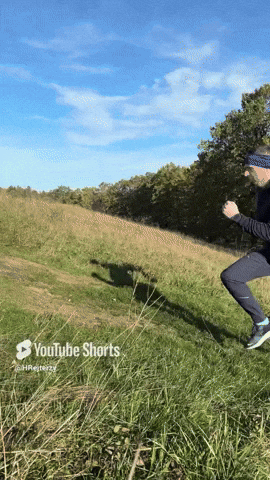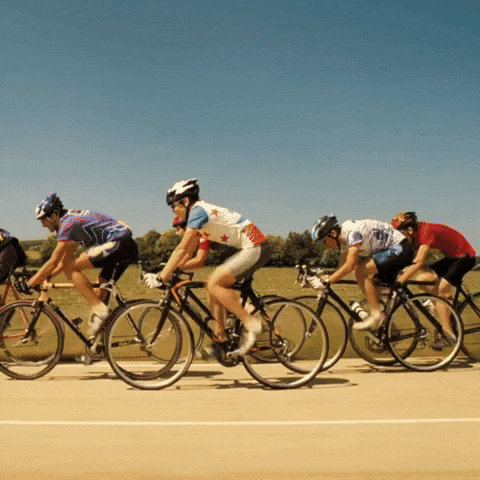How to be a Faster Runner
Breaking 2:55 (Ep 4)

Hey everyone and welcome to another running article!
First of all, if you are new, welcome! Make sure you are subscribed and you can get these letters straight in your inbox!
Today, I wanted to do a deeper dive into some of the whats and whys for my training right now. I hope to make it entertaining for the non-runners, and I also tie all of what I’m learning into real life and faith in Jesus at the end!
So let’s jump in!
Easy runs and hill sprints
The first thing I incorporate in my training are easy runs and hill sprints.
Why?
Easy runs aid in recovery by moving blood around the legs and flushing junk out. They also continue to build a good aerobic base…or at least maintain what is there.
My total mileage is down by a lot right now so keeping some in is crucial so I don’t actually lose any aerobic fitness.
That being said, the priority right now is recovering from fatigue. So truth be told I am actually skipping a lot of easy run days just because my legs or heart rate data still show fatigue :/
Hill sprints are another amazing tool for all runners. They are super easy to implement and should not be daunting at all.
Just find a steep hill and sprint up for 5-10 seconds at a time. That’s it. Rest for a minute (the time to walk back down the hill) and repeat that like 8 times.
You can increase the time of the sprint and the number of reps as you get stronger.
The benefits of hill sprints is wild. They help with injury prevention, applying force efficiently, stride efficiency, and muscular recruitment.
In fact, several studies have shown that short hill sprints had major improvements on 5K performance due to better running economy.
To summarize: easy runs keep aerobic fitness in shape and hill sprints help build better running economy.
Speed days
For all my speed days right now I tried to mimic sprint athletes like Noah Lyles.
So these workouts are fast, all out sprints at very short distances. We are talking like 50m to 300m max.
These have been a lot of fun!
Remember, running should be fun every now and then. Afterall, the name of my game is finding joy in running.
Joy oftentimes is found in the midst of heavy struggle because we know that on the other end of struggle is a great big beautiful tomorrow.
But sometimes joy is just pure bliss.
And running fast for short stints is that pure bliss. It allows your inner child to come back out, it feels incredibly powerful, and you feel like Thor blasting lightning around.
When you run so fast that if you fall or trip you might actually injure yourself, that is a wild feeling. Or it just means you are getting older…
For a more visual look at what these workouts look like, make sure you are subscribed to my YouTube channel! My next video will showcase one of these workouts!
The major benefit to sprinting is building neuromuscular coordination, stride efficiency, and max velocity.
In other words: better running economy.
Do we see a trend yet?
Martial arts day
This workout day is a blast! And one you probably won’t see in most running programs.
But growing up, I trained for 10 years in martial arts, took a break in college, and then trained for 2 more years until covid hit.
Now it’s been 5 years and I’ve been itching to get back to it.
I tell myself I’m well-trained and well-prepared for if something were to happen. But if I don’t train consistently, then that is just a fool’s errand right there.
As such, I wanted to get back into training. I don’t have a studio to work at, but I do have a heavy punching bag, gloves, and years of training to practice.
But I, of course, had to connect this training somehow to running as well.
A lot of martial arts relies on power (or fast-twitch muscle fibers).
Fast Twitch What?
Our muscles are made up of 2 main types of fibers (technically 3, but these are the 2 big ones people talk about): slow and fast.
They are pretty self explanatory.
But I’ll explain them anyways.
We all have both of these fibers in our muscles, but we all have different proportions of these fibers. This is guided mainly by genetics.
I think most people are around 50-50, but some might be skewed towards higher proportions of fast or slow. Technically, you can try to train and adapt your body to create more of one or another. But a lot of it really does come down to your genetics.
Fast twitch muscle fibers are for quick and powerful reactions. We use those to create a ton of force in a very short amount of time. Studies show that the best MMA fighters in the world typically have a very high proportion of these fibers compared to slow.
Slow twitch muscle fibers are for endurance. Creating a smaller amount of force, but keeping that force for an extended period of time. World class marathoners typically have a higher proportion of slow twitch muscle fibers than fast.
They are both important to train, though. And martial arts trains those pesky fast ones. This helps in sprints for sure and makes muscle recruitment snappier.
So in theory, I think this means it should make my muscle recruitment more efficient. Worst case, it will help with sprinting speed, top end speed, and is a lot of fun!
And if your top end speed is faster, then your marathon pace suddenly feels “easier.” Which is always a good feeling!
To summarize, martial arts is good for: more efficient muscle recruitment for better running economy
Strength days
Every runner needs to strength train.
There…I said it.
It’s actually been talked about so much it’s cliche at this point…and yet so many runners still neglect it.
When you put your body under heavy loads and move those loads around, you are building a more resilient frame.
And it’s not just about muscles here either. When you strength train, you are also strengthening your ligaments and tendons.
If you pull a muscle while running, that’s not that bad. It will heal pretty quickly. We pump so much blood into our muscles, you really don’t need to worry.
But a pulled ligament or tendon?
That could be 6 months of no running easy. Maybe longer.
Those take forever to heal.
But they can get stronger just like a muscle. And luckily, it’s through the same things as getting stronger muscles.
The other huge piece for strength training is that when you get stronger, it requires less work (or fuel) for you to produce the same amount of force.
In other words, for running, this means with the same fuel you can either run the same pace for longer or the same distance faster…one might say you are building better running economy.
Lastly, by working in power lifts or plyometic training, you are again working on explosivity, but also muscular endurance. This is super helpful at the end of a marathon for resisting fatigue, not cramping, and being able to hold on to that pace for dear life.
At least, that’s my theory.
To summarize, strength training is good for:
Injury prevention
Better running economy
Fatigue resistance
Life and faith takeaways
If you didn’t notice the trend, the key to the game right now is:
Building better running economy.
Or becoming a more efficient runner.
Thank of a bicycle. If you are biking on the road, you want as narrow of a tire as possible.
Why?
Because while the tire does provide traction to keep us up right on the pavement, it also works against us with friction.
Every time you pedal, you generate force. You want as much of that force as physically possible to propel you forward. That’s why bikers get thin tires, aerodynamic helmets, ride in hunched over positions, and probably so many more things.
They want to be as efficient as possible.
The same thing is true in running.
In fact, many studies show that running economy as a metric is one of the strongest predictors of marathon success.
So for right now…my volume has gone down drastically. My long and grindy workouts are gone right now too.
But that’s because I’m working on a different weakness.
Sometimes in life, we need to tackle our weakness head on. And maybe that means taking a break from all the other noise so you can give it your full attention in the moment.
Hebrews 12:1 says:
“Therefore, since we are surrounded by so great a cloud of witnesses, let us also lay aside every weight, and sin which clings so closely, and let us run with endurance the race that is set before us, looking to Jesus, the founder and perfecter of our faith, who for the joy that was set before him endured the cross, despising the shame, and is seated at the right hand of the throne of God.”
There is a lot to unpack here. Like the fact that Jesus found joy in going to the cross??? Talk about having joy in the midst of struggle.
But again, it’s because He knew the outcome, He knew what His sacrifice meant. Eternal life, salvation, and redemption for all those who believe. A reconciliation for man back to their Creator.
And so I’m reminded in the midst of this season of training, that in our walks with the Lord, sometimes we need to cast off distractions. The author of Hebrews says to lay aside every weight and every sin.
Sometimes that might even mean things that are “good.” Because when a “good” thing becomes a “God” thing, then it has become an idol and sin.
I’m not saying marathon training is a sin…even though some people might think it’s pretty cruel.
But it’s just a reminder during this season that marathons are just a thing. They are vapor in the wind. They are temporary. And if they ever get in the way of my true mission, to Love Christ, love others, and make disciples, then it needs to be put aside.
But as long as God continues to use marathoning and fitness to grow me closer to Him, give me a platform to speak His truth and love to others, then I will keep running my race.
So until next time, run with joy!
References
1. Haugen et al. (2019) — The Training and Development of Elite Sprint Performance: an Integration of Scientific and Best Practice Literature
2. Barnes et al. (2013) — Effects of Different Uphill Interval-Training Programs on Running Economy and Performance
3. Šuc et al. (2022) — Resistance Exercise for Improving Running Economy and Performance
4. Eihara et al. (2022) — Heavy Resistance Training Versus Plyometric Training for Improving Running Economy and Time Trial Performance
5. Kinnunen et al. (2019) — Neuromuscular Adaptations to Short-Term High-Intensity Interval Training
6. Van Hooren et al. (2024) — Optimizing Resistance Training for Sprint and Endurance Athletes
7. Jones (2014) — Strategies to Improve Running Economy (Review)








